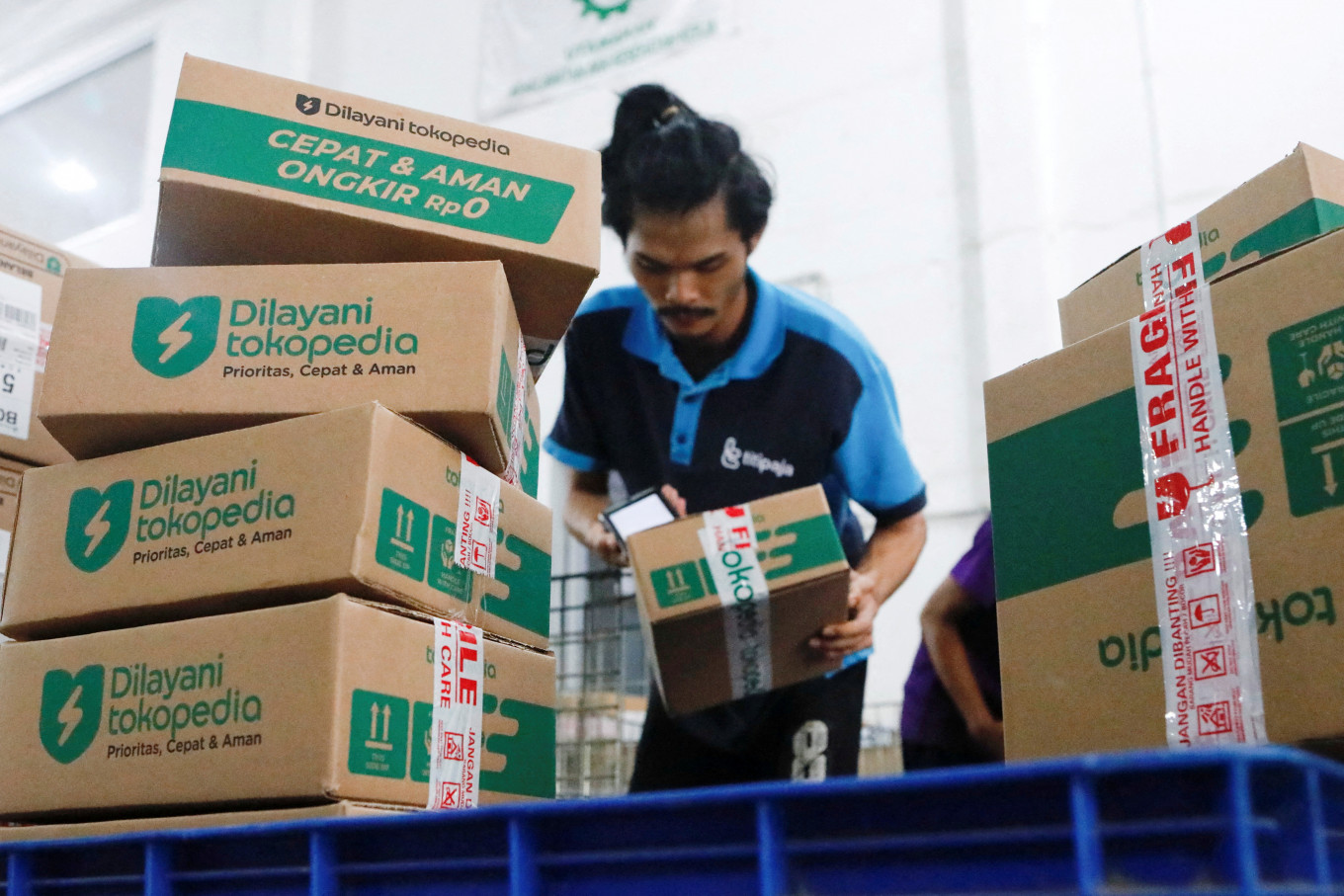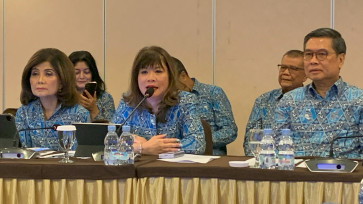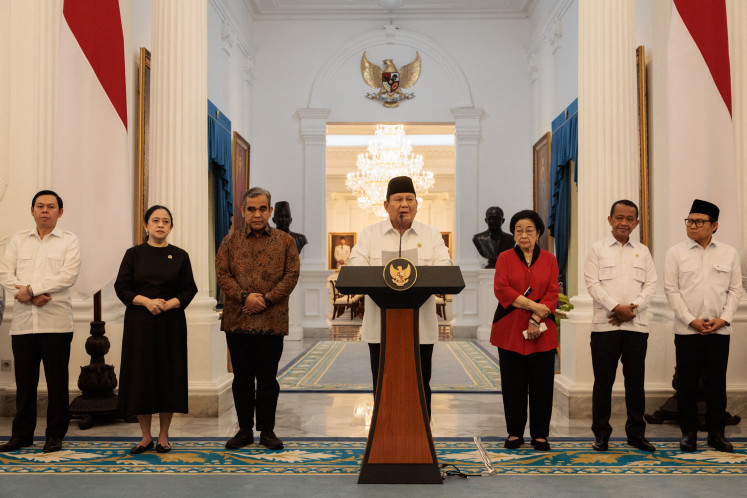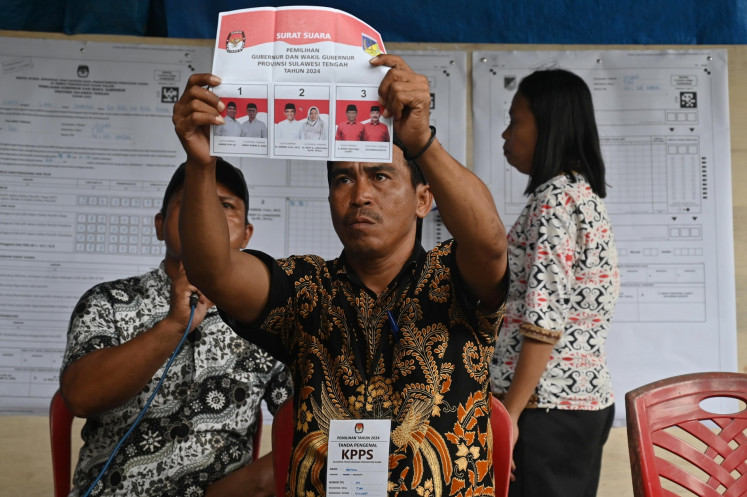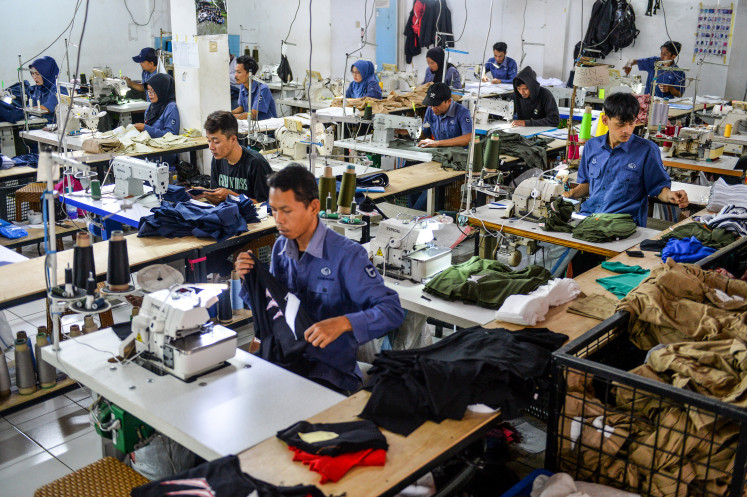Popular Reads
Top Results
Can't find what you're looking for?
View all search resultsPopular Reads
Top Results
Can't find what you're looking for?
View all search resultsDriving ASEAN-China connectivity: The bold promise of the Digital Silk Road
China's DSR initiative offers a tool for ASEAN to achieve its digital ambitions through an equal partnership that involves multiple stakeholders.
Change text size
Gift Premium Articles
to Anyone
T
he Digital Silk Road (DSR), the digital pillar of China's Belt and Road Initiative (BRI), has grown in relevance across Southeast Asia, a lucrative digital market with prospects of expanding into a US$2 trillion digital economy by 2030.
The DSR aims to establish transregional digital connectivity, and nearly all ASEAN member states have already reaped the benefits, especially during the 2017-2020 period, a trend that has endured until today.
The DSR should be regarded as a common resource for ASEAN and China, through which ASEAN offers a promising digital market for Chinese tech giants (including their offshore and subsidiary operations) that in turn invest heavily in the region.
Since this relationship is mutually beneficial and holds tremendous potential, we contend that ASEAN and China should intensify their budding relationship to realize seamless digital connectivity.
The DSR has been instrumental in assisting different business layouts and fulfilling the demands of countries across a broad range of digital sectors, telecommunications networks, e-commerce, surveillance technology and artificial intelligence. It has also successfully mobilized massive investment totaling as much as US$70 billion for digital infrastructure projects, primarily for the build-out of broadband networks and data storage centers in African nations, with ASEAN as the next testing ground.
Thus far, the China-ASEAN Information Harbor (CAIH) is the most promising DSR project in the bilateral digital partnership. The CAIH has established Guangxi province as a digital hub to serve southwest and south central China and links to ASEAN countries to promote infinite connectivity for all innovation-driven developments and lower market barriers. Not only does this initiative promise digital connectedness, but it also facilitates scalability of production.
To achieve a frictionless DSR partnership, both parties need to intensify efforts to overcome major challenges in the transregional digital landscape, specifically infrastructure development and cybersecurity.
The first challenge that needs addressing is regional infrastructure disparity. Overall development progress in ASEAN countries has been markedly uneven, characterized by inadequate fiber optics deployment, slow internet connection and low internet usage. A striking fact, for instance, is that network speed in Indonesia lags behind that in smaller neighboring countries like Vietnam and Laos, despite its achievement of passing the consumer data localization requirement in 2017 and its move to build data centers.
Allowing such a wide gap to remain will only hinder digital growth in what is now the world’s fastest-growing internet market.
It could also disrupt the value chain, particularly in e-commerce, the region's most dynamic sector, and other knowledge-based industries in the region such as ride-hailing, online media and travel. This impediment to digital connectivity might also trigger a domino effect, stalling the region's development of digital talent.
Southeast Asia’s pool of digital talent should be growing faster than it is at present if this challenge were absent, although some roadblocks are bound to persist in any case.
Urban-rural and intergenerational gaps can all exacerbate inequalities in digital literacy. Besides, infrastructure development in most ASEAN countries is not yet aligned with the efforts to enhance the digital literacy of their human capital.
Another unaddressed challenge is cybersecurity. ASEAN and China’s digital economies are growing remarkably, but they remain highly vulnerable to cyberattacks. Several hacking attacks targeting ASEAN economic powerhouses such as Indonesia and Singapore underscore the vulnerability of the region’s cyber defenses.
Singapore experienced its worst data breach with the SingHealth cyberattack in mid-2018, which resulted in the theft of personal data of 1.5 million people, including those of high-profile cabinet ministers, and did not even spare the prime minister’s outpatient prescriptions. Meanwhile, the personal data of nearly 337 million in Indonesians were stolen and sold with impunity.
To address both challenges, ASEAN and China need to synergize via multi-stakeholder collaboration in different types of helix models, be it triple, quadruple, penta or more. Governments, academics and digital enterprises can jointly spearhead different digital partnerships, connecting multiple stakeholders working closely together under the DSR banner.
For instance, in addressing the first challenge, both parties need to build adequate intraregional infrastructure to support all digitization processes. More investment and joint construction are needed in the form of a Digital Innovation Belt, similar to the creative digital innovation implemented in Malaysia. As each other's largest trading partners, such a program is not just wishful thinking.
China, having deployed the longest fiber optic cable among developing markets, is strategically positioned to address such a gap. With a compendium of good practices and quality investment, it is ideal to install fiber optics that connects the two regions. The advantages would be evident in fostering seamless digital connectivity and facilitating trade transactions.
Some well-known Chinese firms such as ZTE, Alibaba and Huawei have made significant investments in digital backbone infrastructure in ASEAN, and even at the national level, Cambodia, Singapore and Vietnam have established DSR-related partnerships with China and some of its leading smart cities.
China’s advanced technology, combined with ASEAN’s flourishing market, enables both parties to benefit from technical and other forms of digital cooperation. This partnership is necessary to bring more concrete projects, particularly through the ASEAN-China Free Trade Agreement (ACFTA 3.0), with specific emphasis on the digital economy and other applicability as regards the Action Plan on the ASEAN-China Partnership on Digital Economy Cooperation (2021-2025), as well as the regional Digital Economy Framework Agreement (DEFA), with targeted completion by the end of 2025.
To address the second challenge of cybersecurity, ASEAN and China need to tackle digital concerns on an equal footing. The establishment of the China-ASEAN Technology Transfer Center in 2020 and the ASEAN-China Cyber Dialogue Mechanism in 2022 was a significant stride toward regional cybersecurity.
Given the growing interest in intrusive surveillance technology within ASEAN, particularly privacy-invasive cyber infrastructure, China understands that it can provide an alternative to the Western technology currently in use. It is then crucial for both parties to agree to serve as respectful and dutiful partners.
Efficient data and information sharing is essential for the two parties to combat cyber threats and fostering trust, especially considering that some cyberattacks and data leaks have been attributed to state-linked hackers and disruption. Therefore, there is an urgent need for a coordinated response to establish digital norms and cohesive policy legislation that is enforceable and fair to govern ASEAN and Chinese digital activity, particularly in safeguarding privacy and protecting data in both jurisdictions.
At any rate, both parties need to promote quality and sizable investments in national cybersecurity infrastructure to protect the data security ecosystem. A safe and trustworthy cyber future for both players hinges on this cooperation.
By treating each other as equal and straightforward partners, ASEAN and China can leverage the DSR as an instrument for achieving ASEAN’s digital aspirations.
***
Yopi Irianto Panut is an analyst at the Foreign Policy Community of Indonesia. Irma Gusmayanti is a policy analyst at the Office of the Coordinating Economic Minister. Sebastian Hoe Wee Kiat is a juris doctor at Singapore University of Social Sciences School of Law. The views expressed are their own.

